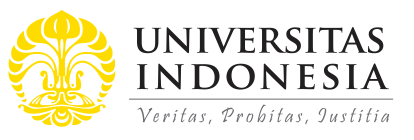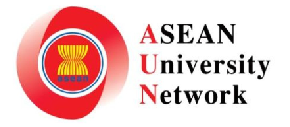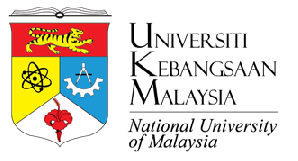
Abstract
Intensification of forage legume strata system technology (FLSST) through dairy cattle production was implemented in collaboration with the Department of Agriculture and the local government unit of San Jorge, Samar, Republic of the Philippines. The beneficiaries of the program were selected based on specific criteria and qualifications. Farmers were given training on dairy cattle production, and 10 beneficiaries in five communities received one ready-to-breed cow. Each farmer-beneficiary established a 500 sqm pasture area using FLSST. Abundant grasses and leguminous forages helped improve the health of the cattle. Cattle weighing an average of 150 kg grew to an average weight of 300 kg. The cows gave calves through artificial insemination. Evident impacts were observed as follows: Ground-Level Impact: Participants appreciated the transformation of their idle land into productive land, and farmers were motivated to purchase additional ruminants. Five hectares of idle land was utilized. Deep-Level Impact: Individuals developed a positive attitude toward venturing into ruminant production. Attitudinal transformation among family members was valued by the community, especially by the five farmer-adopters of FLSST. External-Level Impact: Nonparticipants of the project planted leguminous forages in their idle land and developed a positive outlook toward pasture development and dairy cattle production.
References
Atuhaire, A. M., Mugerwa, S., Kabirizi, J. M., Okello, S., & Kabi, F. (2014). Production characteristics of smallholder dairy farming in the Lake Victoria Agro-ecological Zone Uganda. Frontiers in Science, 4(1), 12-19.
Bebe, B. O. (2004). Effects of feeding systems and breed of cattle on reproductive performance and milk production on smallholder farms. Uganda Journal of Agricultural Sciences, 9(1), 558-563.
https://doi.org/10.14456/easr.2017.37
Bebe, B. O., Udob, H. M. J., & Thorpe, W. (2003) Smallholder dairy systems in the Kenya highlands: feeding practices and production performances under increasing intensification. Herd Dynamics of Smallholder Dairy in the Kenya Highlands, 81.
https://library.wur.nl/WebQuery/wurpubs/fulltext/121373#page=81
Bosma, R. H., Roothaert, R. L., Asis, P., Saguinhon, J., Binh, L. H., & Yen, V. H. (2003). Economic and social benefits of new forage technologies in Mindanao, Philippines, and Tuyen Quang, Vietnam. CIAT.
Cardona, C. A. C., Ramírez, J. F. N., Morales, A. M. T., Restrepo, E. M., Orozco, J. D. C., Vera, J. K., ... & Rosales, R. B. (2014). Contribution of intensive silvopastoral systems to animal performance and to adaptation and mitigation of climate change. Revista Colombiana de Ciencias Pecuarias, 27(2), 76-94.
http://www.scielo.org.co/scielo.php?script=sci_abstract&pid=S0120-06902014000200003
Devendra, C. (1997). Mixed farming and intensification of animal production systems in Asia. Outlook on Agriculture, 26(4), 255-265.
https://doi.org/10.1177/003072709702600407
Devendra, C. (2000). Animal production and rainfed agriculture in Asia: potential opportunities for productivity enhancement. Outlook on Agriculture, 29(3), 161-175.
https://doi.org/10.5367/000000000101293202
Devendra, C., & Chantalakhana, C. (2002). Animals, poor people, and food insecurity: opportunities for improved livelihoods through efficient natural resource management. Outlook on Agriculture, 3(13), 161-175.
https://doi.org/10.5367/000000002101294010
Dolinska, A., & d'Aquino, P. (2016). Farmers as agents in innovation systems. Empowering farmers for innovation through communities of practice. Agricultural Systems, 142, 122-130.
https://doi.org/10.1016/j.agsy.2015.11.009
Ha, J. K., & Kim, H. J. (2004). Management of dairy-animal feeding for better productivity and food safety. In Seminar on Sustainable Dairy-sector Development for Poverty Reduction, 22-27 November 2004 (pp. 25-35).
Hernández, I., & Sánchez, M. D. (2014). Small ruminant management and feeding with high quality forages in the Caribbean. Santo Domingo, República Dominicana: IICA.
Hohnwald, S., Rischkowsky, B., Camarão, A. P., Schultze-Kraft, R., Rodrigues Filho, J. A., & King, J. M. (2006). Integrating cattle into the slash-and-burn cycle on smallholdings in the Eastern Amazon, using grass-capoeira or grass-legume pastures. Agriculture, Ecosystems & Environment, 117(4), 266-276.
https://doi.org/10.1016/j.agee.2006.04.014
German, L., Stroud, A., Amede, T., Opondo, C., & Rao, S. (2006). Integrated Natural Resource Management in Practice: Enabling Communities to Improve Mountain Livelihoods and Landscapes.
http://hdl.handle.net/123456789/2528
Gil, J., Siebold, M., & Berger, T. (2015). Adoption and development of integrated crop–livestock–forestry systems in Mato Grosso, Brazil. Agriculture, Ecosystems & Environment, 199, 394-406.
https://doi.org/10.1016/j.agee.2014.10.008
Kemp, D. R., & Michalk, D. L. (2007). Towards sustainable grassland and livestock management. Journal of Agricultural Science-Cambridge, 145(6), 543.
http://dx.doi.org/10.1017/S0021859607007253
Khan, M. J., Peters, K. J., & Uddin, M. M. (2009). Feeding strategy for improving dairy cattle productivity in small holder farm in Bangladesh. Bangladesh Journal of Animal Science, 38(1-2), 67-85.
https://doi.org/10.3329/bjas.v38i1-2.9914
Kimaro, E. G., Mlangwa, J. E. D., Lyimo-Macha, J., & Kimaro, J. G. (2013). The influence of women groups on income obtained from small-scale dairy cattle production: Acase of Arumeru District, Tanzania. Livestock Research for Rural Development, 25(4), 21-27.
http://www.lrrd.org/lrrd25/4/kima25060.htm
Laidlaw, A. S., & Teuber, N. (2001). Temperate forage grass-legume mixtures: advances and perspectives. International Grassland Congress, 19, 85-92.
https://pdfs.semanticscholar.org/3f35/df8da6df39ffbc52a50f030dbf1f751772e5.pdf
Lamhauge, N., Lanzi, E., & Agrawala, S. (2012). Monitoring and Evaluation for Adaptation: Lessons from Development Co-operation Agencies. OECD Environment Working Papers, 38. Paris: OECD Publishing.
https://doi.org/10.1787/5kg20mj6c2bw-en
Lecture, H. S. M. (1997). Potential and prospects of legume-based pastures in the tropics. Tropical Grasslands, 31, 81-94.
Luyombya, B. G. P. (2014). Farmers' training and its influence on the adoption of improved dairy husbandry practices in Arumeru district (Doctoral dissertation, Sokoine University of Agriculture).
http://hdl.handle.net/123456789/464
Makori, J. A. (2007). Influence of farmer field school extension approach on smallholders’ knowledge and skills of dairy management technologies in Molo Division, Nakuru District of Kenya (Doctoral dissertation, Egerton University).
Memorial, A. (2010). Ecological Intensification of Livestock Production Systems to Improve Livestock Productivity and Environmental Services on the Tugi (Gutah) Hills of the North West Region of Cameroon.
Muia, J. M. K., Kariuki, J. N., Mbugua, P. N., Gachuiri, C. K., Lukibisi, L. B., Ayako, W. O., & Ngunjiri, W. V. (2011). Smallholder dairy production in high altitude Nyandarua milk-shed in Kenya: Status, challenges, and opportunities. Livestock Research for Rural Development, 23(5), 2011.
Muir, J. P., Pitman, W. D., Foster, J. L., & Dubeux Jr, J. C. (2015). Sustainable intensification of cultivated pastures using multiple herbivore species. African Journal of Range & Forage Science, 32(2), 97-112.
https://doi.org/10.2989/10220119.2015.1045555
Murgueitio, E., Calle, Z., Uribe, F., Calle, A., & Solorio, B. (2011). Native trees and shrubs for the productive rehabilitation of tropical cattle ranching lands. Forest Ecology and Management, 261(10), 1654-1663.
https://doi.org/10.1016/j.foreco.2010.09.027
Odion, E. C., Asiribo, O. E., Ogunlela, V. B., Singh, B. B., & Tarawali, S. A. (2007). Strategies to improve and sustain food production capacity in the savanna: The role of leguminous fodder crops in maintaining soil fertility and health. Journal of Food Agriculture and Environment, 5(2), 338.
Rabbani, M. S., Alam, M. M., Ali, M. Y., Rahman, S. M. R., & Saha, B. K. (2004). Participation of rural people in dairy enterprise in a selected area of Bangladesh. Pakistan Journal of Nutrition, 3(1), 29-34. http://citeseerx.ist.psu.edu/viewdoc/download?doi=10.1.1.555.1711&rep=rep1&type=pdf
Rathod, P. K., Nikam, T. R., & Landge, S. (2016). Participation of rural women in dairy farming in Karnataka. Indian Research Journal of Extension Education, 11(2), 31-36. https://mapn-ulm.ac.id/wp-content/uploads/2019/10/Participation-of-rural-women.pdf
Ridley, A. M., Mele, P. M., & Beverly, C. R. (2004). Legume-based farming in Southern Australia: developing sustainable systems to meet environmental challenges. Soil Biology and Biochemistry, 36(8), 1213-1221.
https://doi.org/10.1016/j.soilbio.2004.04.007
Rossignoli, C., Di Iacovo, F. P., Moruzzo, R., & Scarpellini, P. (2015). Dairy cattle, livelihoods and resilience in Gaza Strip: a case study.
https://newmedit.iamb.it/share/img_new_medit_articoli/1006_24rossignoli.pdf
Rueda, B. L., McRoberts, K. C., Blake, R. W., Nicholson, C. F., Valentim, J. F., & Fernandes, E. C. M. (2020). Nutrient status of cattle grazing systems in the western Brazilian Amazon. Cogent Food & Agriculture, 6(1), 1722350.
https://doi.org/10.1080/23311932.2020.1722350
Sarvade, S., Upadhyay, V. B., & Agrawal, S. B. (2019). Quality fodder production through the silvopastoral system: a review. Agroforestry for Climate Resilience and Rural Livelihood, Eds: Inder Dev, Asha Ram, Naresh Kumar, Ramesh Singh, Dhiraj Kumar, AR Uthappa, AK Handa, & OP Chaturvedi. Scientific Publishers. Jodhpur (Raj.). pp. 345-359.
Schultze-Kraft, R., Rao, I. M., Peters, M., Clements, R. J., Bai, C., & Liu, G. (2018). Tropical forage legumes for environmental benefits: An overview. Tropical Grasslands-Forrajes Tropicales, 6(1), 1-14.
http://dx.doi.org/10.17138/tgft
Stelzenmüller, V., Breen, P., Stamford, T., Thomsen, F., Badalamenti, F., Borja, Á., ... & Degraer, S. (2013). Monitoring and evaluation of spatially managed areas: a generic framework for implementation of ecosystem based marine management and its application. Marine Policy, 37, 149-164.
https://doi.org/10.1016/j.marpol.2012.04.012
Uddin, M. N., Uddin, M. B., Al Mamun, M., Hassan, M. M., & Khan, M. M. H. (2012). Small scale dairy farming for livelihoods of rural farmers: Constraint and prospect in Bangladesh. Journal of Animal Science Advances, 2(6), 543-550.
https://www.academia.edu/download/31651226/JASA-2012-06-543-550.pdf
Valentim, J. F., & Andrade, C. D. (2004). Perspectives of grass-legume pastures for sustainable animal production in the tropics. Reunião Annual Da Sociedade Brasileira De Zootecnia, 40, 142-154.
Waghorn, G. C., & Clark, D. A. (2004). Feeding value of pastures for ruminants. New Zealand Veterinary Journal, 52(6), 320-331.
Recommended Citation
Bollido, Marcos E.; Polbos, Teresa B.; and Bejar, Feleciano R.
(2020).
Intensifying forage legume strata system technology through dairy cattle production.
ASEAN Journal of Community Engagement, 4(1).
Available at: https://doi.org/10.7454/ajce.v4i1.1084







